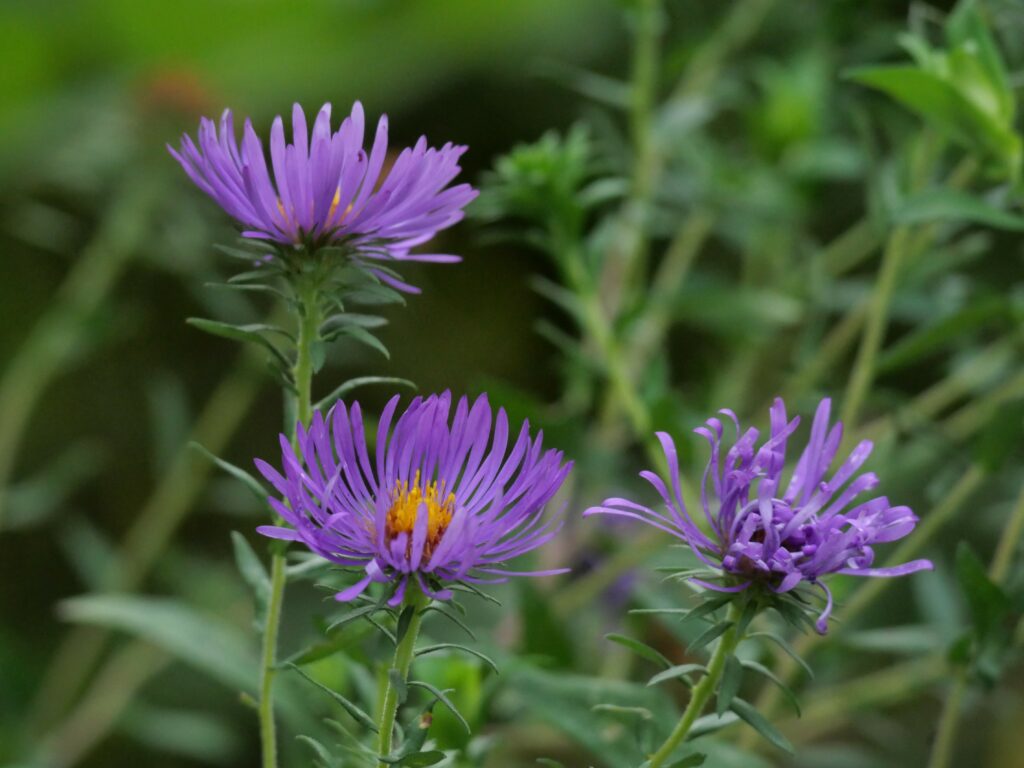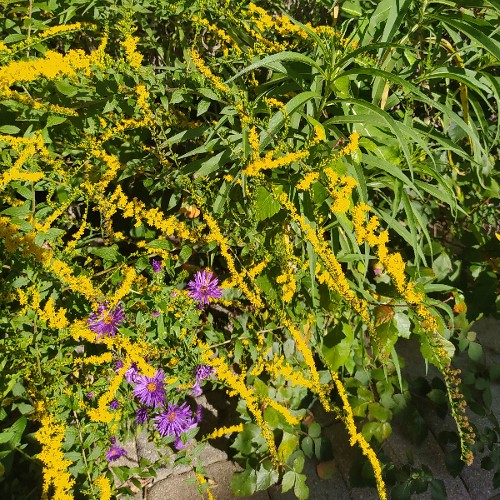By Linda Ferich, Community Wildlife Habitat Volunteer Leader

Asters (Photo by Avery Van Etten)
Beautiful hues seen in the gardens of autumn awaken us to the wonder of nature around us. The goldenrods, native grasses, and asters are coming into their glory. Asters and goldenrods are actually at the top of the most valuable perennial plants according to Dr. Doug Tallamy’s research. They are host plants for a combined 227 species of caterpillars, and many pollinators visit the flowers for pollen and nectar.
Here are some tips for fall gardening to support habitat for birds, pollinators, and other wildlife.
Leave the Leaves
Leaves provide cover for pollinators and invertebrates. Many insects spend the winter among the leaves as eggs, caterpillars, chrysalises, or adults. Mulching the leaves will destroy this important food source for the rest of the web of life. You can put the leaves in your garden beds or another area, allowing them to break down naturally. When was the last time you saw a hummingbird moth, which pupates in a cocoon in leaf litter?
Keep the Stems
Some insects, including certain bee species, like to nest or leave their eggs in the cavities of hollow or pithy plant stems. Leaving wildflower stalks and seed heads in your garden over the fall and winter can help provide food or habitat for these bugs.

Wrinkeleaf goldenrod (Photo by Linda Ferich)
Grow Your Garden
Consider extending the size of your garden beds and reducing the amount of lawn on your land.
Fall is a great time to plant! Get your plants in the ground up to six weeks before the first frost. If you’re planting wildflower seed mixes, read the label closely to make sure they don’t contain exotic species. Penn State Extension offers a list of places to get native plants.
Plan Your Planting
Biodiverse layers of trees, shrubs, perennials, and groundcovers will provide food such as berries, seeds, nuts, pollen, and nectar for wildlife. Different species of wildlife will use those different biodiverse layers in the landscape.
Intentionally planting native species in your garden helps support a variety of wildlife from bugs to birds. Check out our Community Wildlife Habitat page for resources on how to plant native to protect and restore habitat!
